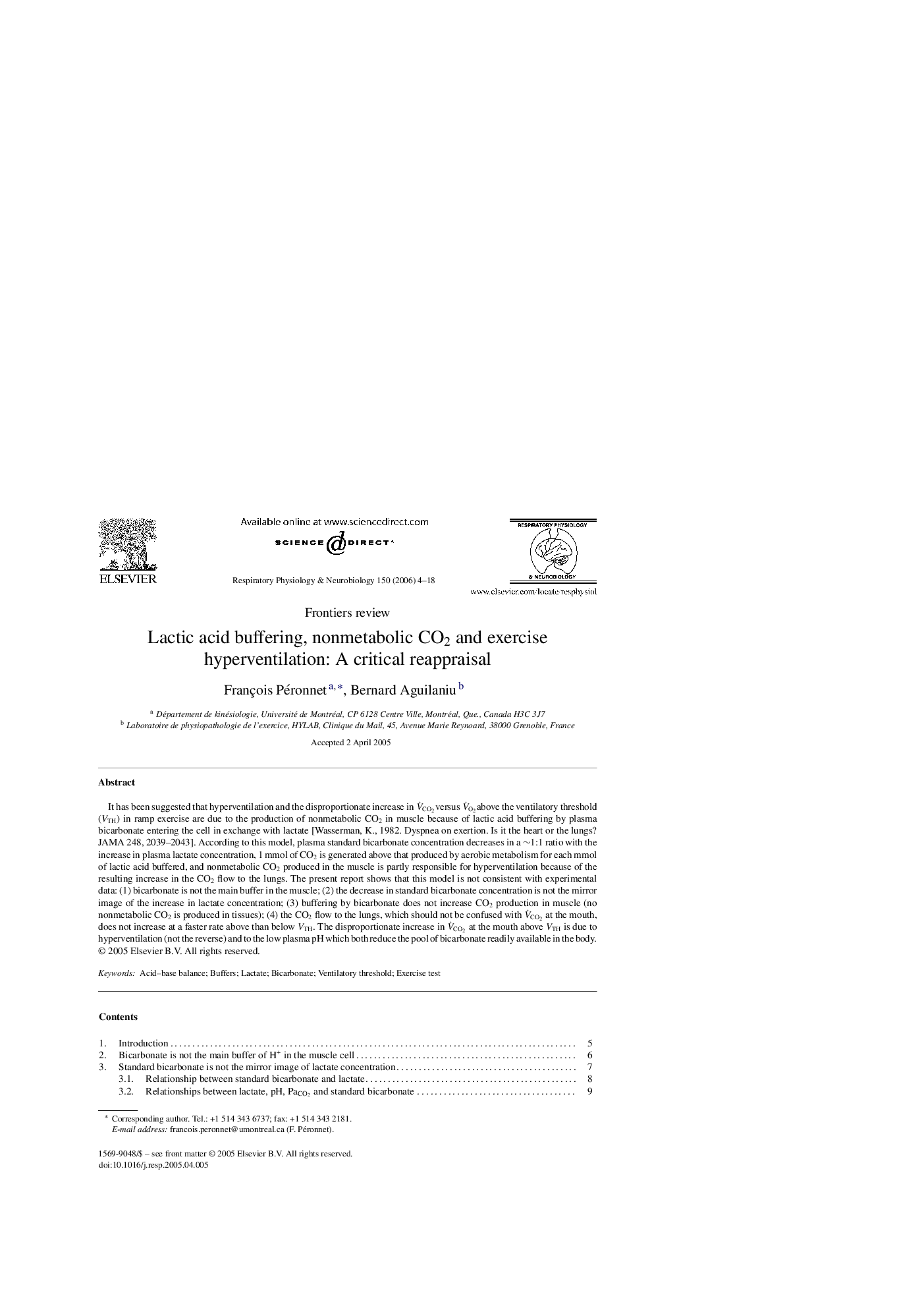| Article ID | Journal | Published Year | Pages | File Type |
|---|---|---|---|---|
| 2848686 | Respiratory Physiology & Neurobiology | 2006 | 15 Pages |
It has been suggested that hyperventilation and the disproportionate increase in V˙CO2versus V˙O2above the ventilatory threshold (VTH) in ramp exercise are due to the production of nonmetabolic CO2 in muscle because of lactic acid buffering by plasma bicarbonate entering the cell in exchange with lactate [Wasserman, K., 1982. Dyspnea on exertion. Is it the heart or the lungs? JAMA 248, 2039–2043]. According to this model, plasma standard bicarbonate concentration decreases in a ∼1:1 ratio with the increase in plasma lactate concentration, 1 mmol of CO2 is generated above that produced by aerobic metabolism for each mmol of lactic acid buffered, and nonmetabolic CO2 produced in the muscle is partly responsible for hyperventilation because of the resulting increase in the CO2 flow to the lungs. The present report shows that this model is not consistent with experimental data: (1) bicarbonate is not the main buffer in the muscle; (2) the decrease in standard bicarbonate concentration is not the mirror image of the increase in lactate concentration; (3) buffering by bicarbonate does not increase CO2 production in muscle (no nonmetabolic CO2 is produced in tissues); (4) the CO2 flow to the lungs, which should not be confused with V˙CO2 at the mouth, does not increase at a faster rate above than below VTH. The disproportionate increase in V˙CO2 at the mouth above VTH is due to hyperventilation (not the reverse) and to the low plasma pH which both reduce the pool of bicarbonate readily available in the body.
